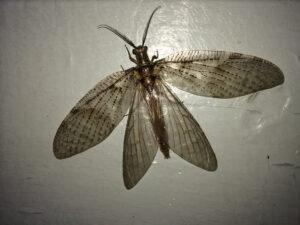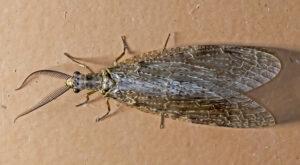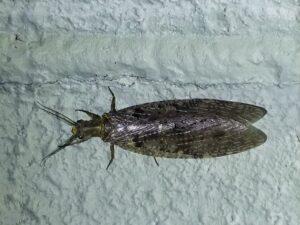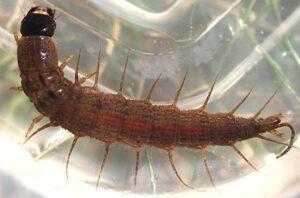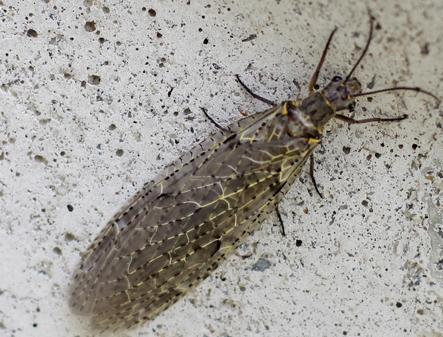Summer Fishfly (Chauliodes pectinicornis)
Updated on
17/11/2022The summer fishfly is a species of North American fishfly. As implied by its name, it is most active in the summer months of May-July unless the year-round climate is on the warmer side. In the latter case, they can be seen both in summer and spring. Its specific name, pectinicornis,stands for ‘comb-horned’.
Scientific Classification
- Class:Insecta
- Family:Megaloptera
- Family:Corydalidae
- Genus:Chauliodes
- Species:C. pectinicornis
Conservation Status
Description
The summer fishfly can be identified by its big ‘lacewings’. It uses its combed antennae for sensing. It has a light beige or tan coloration. The head and pronotum have pale markings against a dark background. The fully grown adults reach a size of 1-2 inches (21-46 mm), excluding their wings.
Distribution: Eastern Canada and the US from Maine in the northeast to Liberty, Alachua, and Santa Rosa counties in Florida in the southeast up to Kansas in the far west.
Habitat: Near ponds, lakes, rivers, and calm streams.
Do They Bite/Sting: No.
Lifespan: 3-4 years.
Predators: No natural predators.
Behavior and Characteristics
Diet
It feeds on plant matter and small aquatic insects.
Life Cycle
The summer fishfly undergoes complete metamorphosis.
1. Egg Stage
Large masses of 200-3000 eggs are laid near still water bodies.
2. Larva Stage
After hatching, the larvae crawl to the nearest source of water live on detritus, or become omnivorous. This is the longest stage of their life cycle, lasting 2-3 years that is spent underwater. Once large enough, the larvae leave the water and pupate near or under bark.
2. Pupa Stage
This stage lasts a couple of weeks.
3. Adult Stage
The adults emerge and live for just a few days, in which they lay eggs.
Source
eol.org, marylandbiodiversity.com, bugguide.net, pbs.twimg.com




